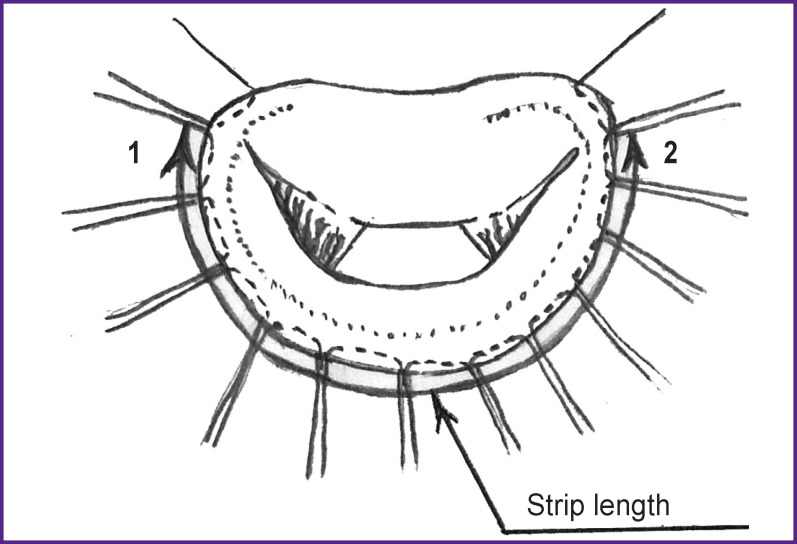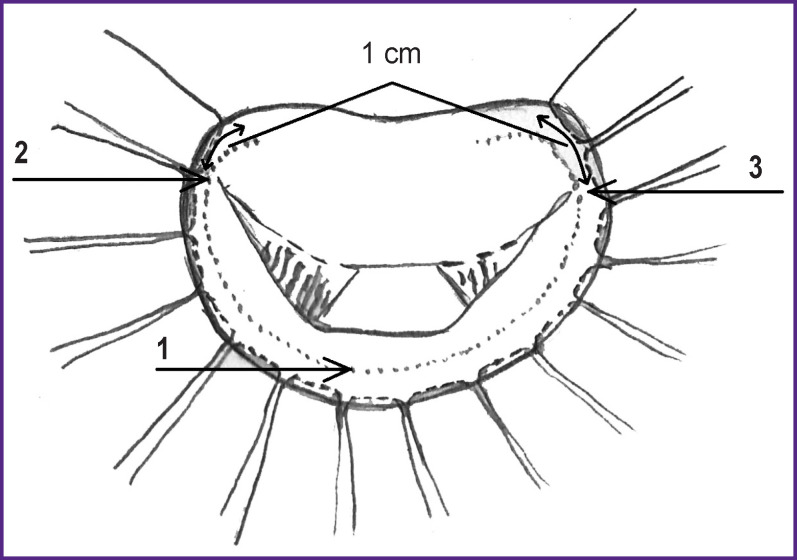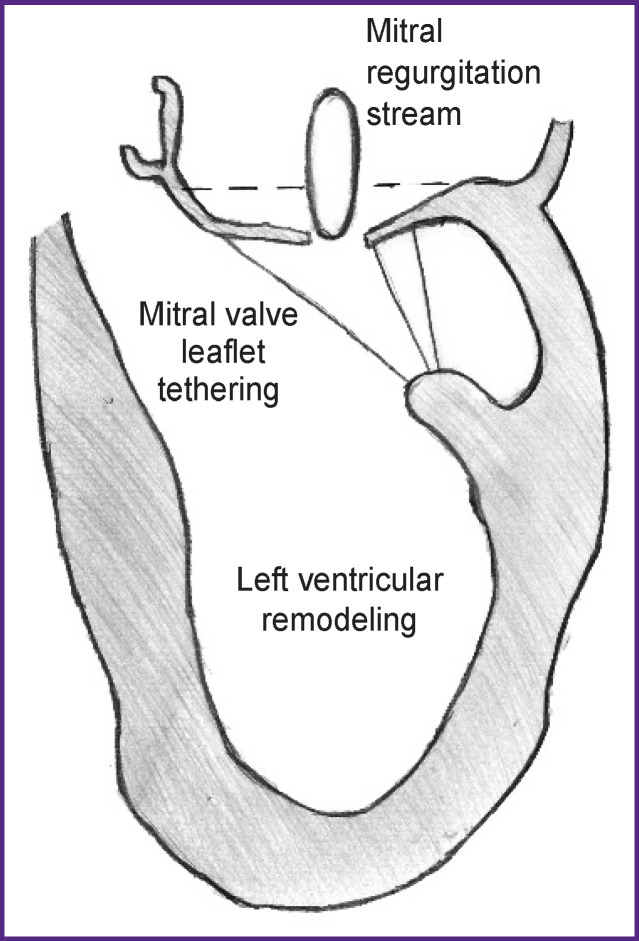Modified Mitral Valve Repair with Its Insufficiency of Ischemic Genesis.
IF 0.9
Q4 MEDICINE, RESEARCH & EXPERIMENTAL
引用次数: 0
Abstract
The aim of the study was to assess the effectiveness of modified mitral valve repair in comparison with traditional methods of correcting ischemic mitral regurgitation. Materials and Methods The results of surgical treatment of 80 patients with coronary artery disease complicated by ischemic mitral regurgitation were analyzed. The mean age of the patients was 58.95±8.36 years; the ratio of men and women was 67:13. Heart failure of FC II (according to the NYHA classification) was detected in 6 patients (7.50%), FC III — in 69 (86.25%) patients, FC IV — in 5 (6.25%) patients. Echocardiographic examination was used to determine the significance and genesis of mitral regurgitation in the preoperative period. 57 patients (71.25%) were detected with grade II mitral regurgitation, 23 (28.75%) had grade III. Annuloplasty was chosen as the operation for the correction of the valve apparatus. The patients of group 1 (n=23) underwent reconstructive surgery on the mitral valve using an autopericardial strip according to the technique, which we have developed, in combination with coronary artery bypass grafting (CABG), the patients of group 2 (n=26) underwent plastic surgery using a support ring in combination with CABG, patients of group 3 (n=31) had myocardial revascularization without correction of the valve apparatus. Results The patients of group 2 underwent restrictive mitral annuloplasty performed with rigid support rings, group 1 — with an autopericardial strip as a soft support ring, the patients of group 3 underwent CABG alone. One patient from group 2 died in the early postoperative period due to acute perioperative myocardial infarction. The most common complications were pleurisy, acute cardiovascular failure, acute respiratory failure, and cardiac arrhythmias. The smallest number of complications was noted in the group 3, where patients underwent CABG alone. After surgery, all the patients showed a decrease in mitral regurgitation, which was most pronounced in the groups with annuloplasty. When analyzing the immediate results of the operations, it was revealed that the patients of groups 1 and 2, who underwent combined interventions, had a higher percentage of complications, and the length of their stay in the ICU increased. However, these groups showed a significant improvement in mitral valve functioning. Plasty of the mitral valve with an autopericardial strip according to the technique, which we have developed, demonstrated a good hemodynamic effect, the absence of significant regurgitation in the postoperative period.



改良二尖瓣修复与缺血发生功能不全。
本研究的目的是评估改良二尖瓣修复与传统方法校正缺血性二尖瓣反流的有效性。材料与方法:分析80例冠心病合并缺血性二尖瓣反流的手术治疗结果。患者平均年龄58.95±8.36岁;男女比例为67:13。FCⅱ型心衰6例(7.50%),FCⅲ-型69例(86.25%),FCⅳ-型5例(6.25%)。超声心动图检查确定术前二尖瓣返流的意义和原因。II级二尖瓣返流57例(71.25%),III级23例(28.75%)。选择环成形术矫正瓣膜装置。第1组患者(n=23)根据我们开发的技术,采用心包自绕带结合冠状动脉旁路移植术(CABG)对二尖瓣进行重建手术,第2组患者(n=26)采用支撑环结合冠状动脉旁路移植术进行整形手术,第3组患者(n=31)在不矫正瓣膜装置的情况下进行心肌血运重建术。结果:2组采用刚性支撑环进行限制性二尖瓣成形术,1组采用心包带作为软支撑环,3组单独行冠脉搭桥。2组1例患者术后早期因急性围手术期心肌梗死死亡。最常见的并发症是胸膜炎、急性心血管衰竭、急性呼吸衰竭和心律失常。在单独行CABG的组3中,并发症的数量最少。手术后,所有患者的二尖瓣返流都有所减少,其中二尖瓣成形术组的效果最为明显。在分析手术的即时效果时,发现联合干预的1组和2组患者出现并发症的比例更高,在ICU的住院时间也更长。然而,这些组的二尖瓣功能明显改善。根据我们开发的技术,用自心包条对二尖瓣进行成形术,显示出良好的血流动力学效果,术后没有明显的反流。
本文章由计算机程序翻译,如有差异,请以英文原文为准。
求助全文
约1分钟内获得全文
求助全文
来源期刊

Sovremennye Tehnologii v Medicine
MEDICINE, RESEARCH & EXPERIMENTAL-
CiteScore
1.80
自引率
0.00%
发文量
38
 求助内容:
求助内容: 应助结果提醒方式:
应助结果提醒方式:


